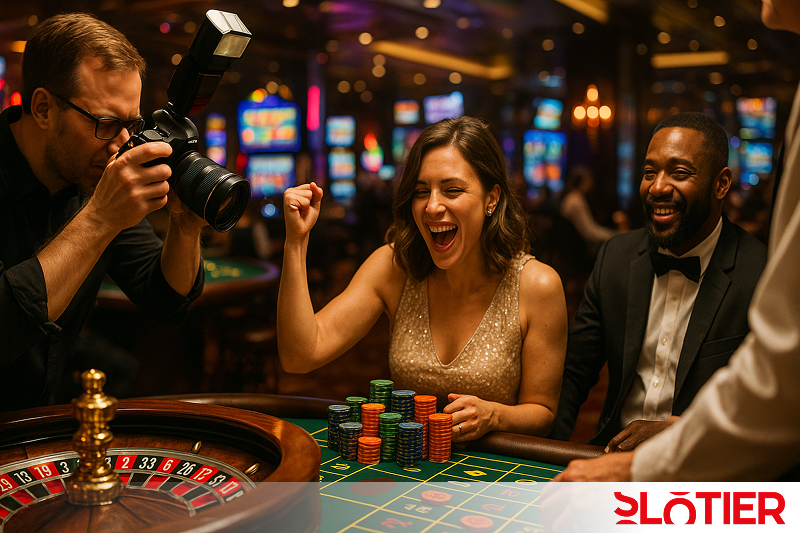
Casinos are visually overwhelming in the best way. Lights flashing, chips clinking, people in constant motion — it’s an environment built to stimulate. For photographers, though, that energy can be both a gift and a hurdle. The goal isn’t just to document the scene, but to capture its essence: the mood, the tension, the subtle drama.
In Canada, organizing a brand-oriented photo shoot inside a casino is more like staging a short film than taking stills. Everything is pre-arranged — lighting setups, wardrobe, even facial expressions. What looks like a candid shot of someone celebrating a win is usually the result of hours of preparation.
The first step isn’t creative — it’s administrative. Casinos are controlled environments with strict protocols. Anyone planning a shoot needs formal approval. That includes sharing details about the purpose of the project, how long it will take, and what areas will be used. Access is granted carefully.
Privacy is also a serious consideration. Casino guests aren’t there to be photographed. So professional models stand in for real patrons. Most shoots happen during off-hours to avoid disruptions and to give the crew full control of the space.
Casinos are already theatrical, but not always camera-friendly. The ambient lighting, while great for atmosphere, can be a challenge on set. That’s why crews bring their own lighting rigs — not to change the mood, but to emphasize the best parts of it.
Before the shoot, teams scout the space and look for angles that tell a story. A roulette wheel under soft overhead light. A row of slot machines reflecting in glass. These spots help anchor the session. Every decision, from lighting color to furniture placement, is aimed at making the scene feel natural yet intentional.
Casino shoots aren’t about picture-perfect models. They need people who can look comfortable in the space, who can act without looking like they’re acting. The wrong expression can ruin a scene. A grin that’s too polished? It doesn’t work. Crews look for subtlety — a glance, a smirk, a pause.
Scenes often focus on tiny moments: two people leaning in to talk, a hand reaching for chips, a half-laugh after a win. These moments might take 20 tries to get right, but when it clicks, the photo tells a full story without a single word.
Not every session calls for special effects, but subtle tricks can elevate the results. A slight fog can add depth. A moving dealer’s hand or rolling dice can give a static image a sense of momentum. The goal isn’t to distract — it’s to enhance.
After the shoot, images are gently edited. Nothing too glossy. The idea is to make the shot feel honest. When viewers look at it, they should feel like they’re standing just outside the frame.

Interestingly, online platforms are borrowing heavily from these real-world aesthetics. Brands like Slotier Casino Canada base much of their visual approach on what works in physical casinos — the lighting, the textures, the sense of tactility.
Even though Online Casino Slotier doesn’t have a physical lobby, it still builds its world with the same visual principles. The interface design, motion effects, and even the shine on digital elements are created to feel familiar — grounded in real spaces.
These design choices don’t appear out of nowhere. The Slotier team, like others in the online game space, studies how light falls in an actual room, how players interact at a table, and adapts those dynamics into their user experience.
These days, a brand can’t afford to blend in. Whether it’s a new game or an entire casino, people judge fast — and they judge visually. That’s why high-end imagery is so much more than a marketing tool. It’s the first impression, the tone-setter, the thing that lingers after a visitor closes the tab.
For platforms like Slotier, visuals aren’t just about design — they’re part of the experience. The look of the interface, the weight of the icons, the way the home screen lights up — it all comes from a shared idea: make it feel real, but make it better.
Commercial shoots in Canadian casinos aren’t about glamour or flash. They’re about capturing a mood — something you feel more than you see. Every shoot takes planning, every image takes care. But when it’s done right, the result doesn’t just show a place. It invites people in.
The same goes for digital spaces. Slotier, like many forward-thinking brands in the online game world, builds on real visual traditions — adapting the richness of physical casinos for modern screens. It’s storytelling through light, space, and detail. And it works.